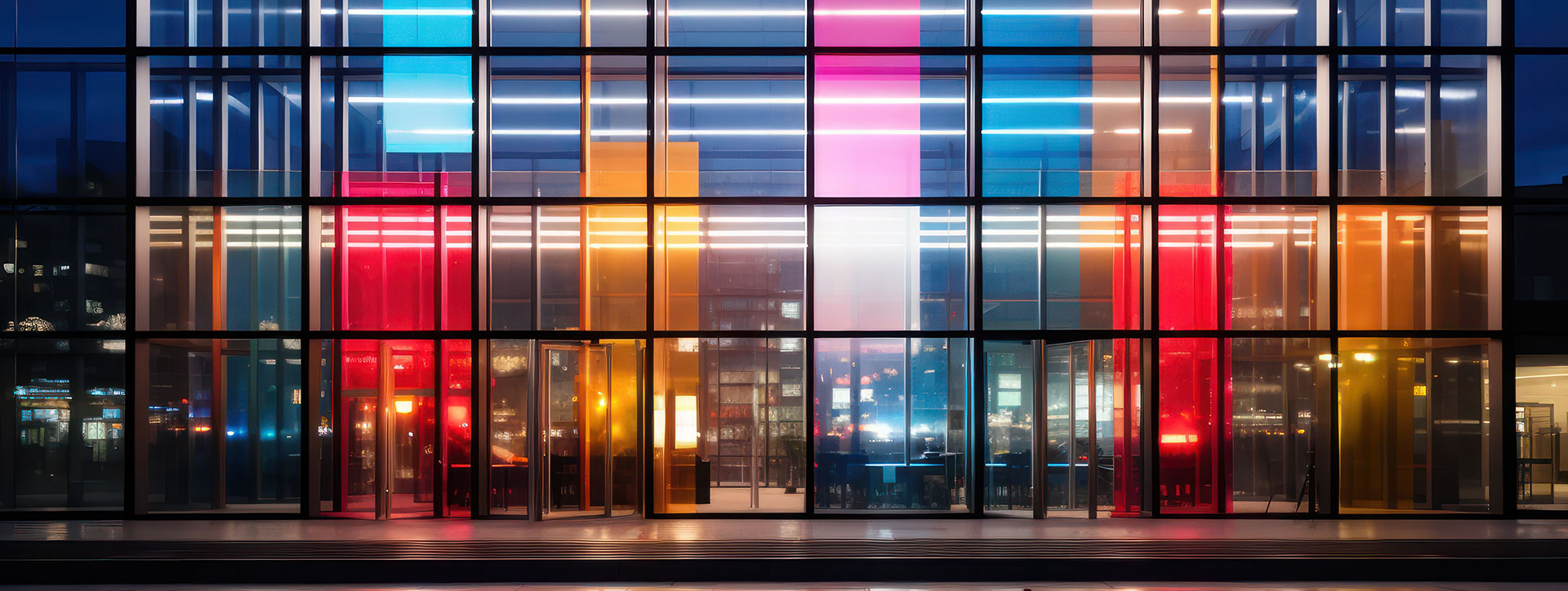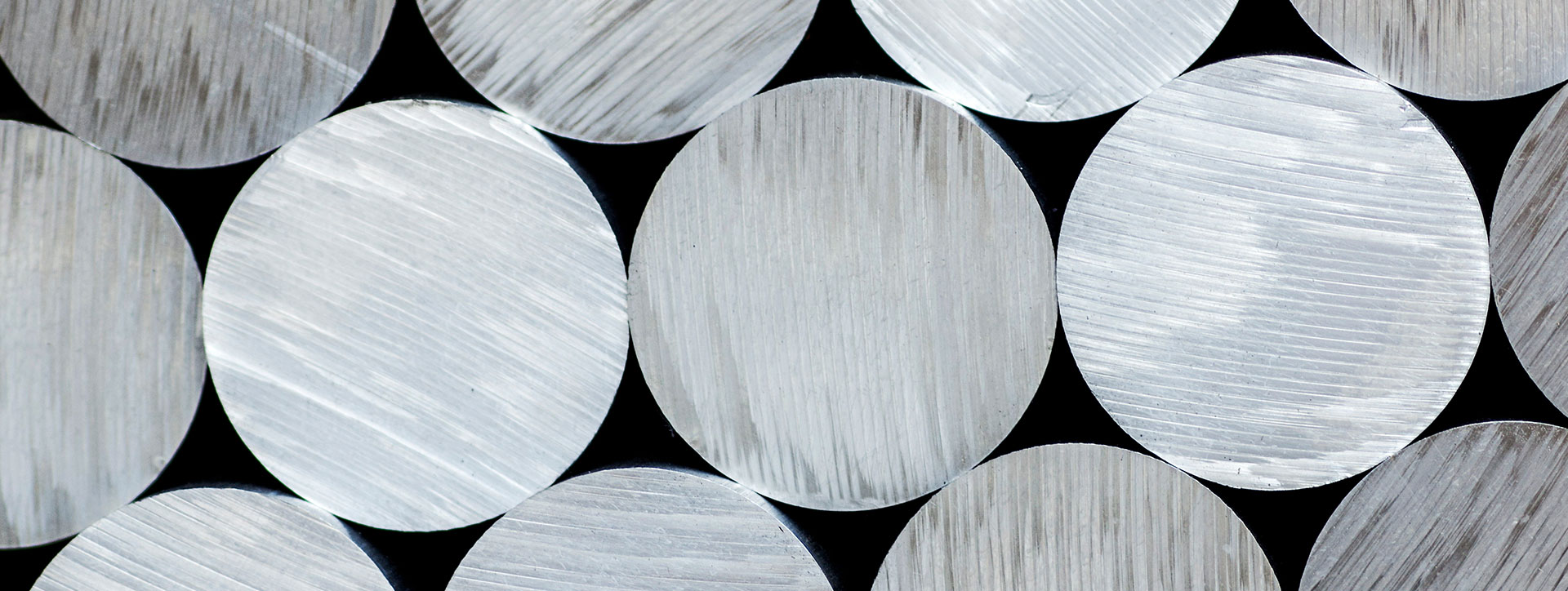| ESRS topic | Material impact description | Impact type | Time horizon | Place within value chain |
| Climate change | Climate change impact by GHG emissions | Actually negative | Ongoing | The whole value chain |
| Intermediate consumption of natural resources in the form of fossil fuels by consuming energy for production purposes | Actually negative | Ongoing | The whole value chain | |
| Pollution | Environmental impact by way of producing waste which is further processed in various manners with the use of energy and contributes to additional pollution | Actually negative | Ongoing | The whole value chain |
| Potential pollution of living organisms and marine resources through the production of flexible packaging, from which the waste originating downstream the value chain may end up in seas and oceans | Potentially negative | Ongoing | Downstream | |
| Potential impact on the amount of aluminium waste not recycled through lack of control over end-of-life products | Potentially negative | Ongoing | Downstream | |
| Potentially harmful effects on living organisms and the environment through possible contact with substances of particular concern used in production processes | Potentially negative | Ongoing | Own operations | |
| Potentially harmful effects on living organisms and the environment through possible contact with potentially hazardous substances used in production processes | Potentially negative | Ongoing | Own operations | |
| Water and marine resources | Depletion of water resources and disruption of the natural water cycle in the ecosystem through the use of water in the value chain, particularly in primary aluminium production | Potentially negative | Ongoing | Upstream, own operations |
| Biodiversity and ecosystems | Contamination due to management and storage of red mud (bauxite residue) from alumina refining in the value chain | Potentially negative | Ongoing | Higher level |
| Resource use and circular economy | Energy consumption and environmental degradation reduction as well as conservation of natural resources by recovering aluminium used in manufacturing | Actually positive | Ongoing | Own operations |
| Waste reduction and contribution to resource conservation by sending inorganic waste for recycling | Actually positive | Ongoing | Own operations |
Environment
Taxonomy Regulation disclosure
Pursuant to Regulation (EU) 2020/852 of the European Parliament and of the Council of 18 June 2020 on the establishment of a framework to facilitate sustainable investments, and Commission Delegated Regulation (EU) 2021/2178, Grupa KĘTY S.A. has been presenting the turnover, capital expenditure (CapEx), and operating expenditure (OpEx) indicators for taxonomy-eligible economic activities which comply with the following conditions:
- making a substantial contribution to at least one of the following environmental objectives: climate change mitigation, climate change adaptation, sustainable use and protection of water and marine resources, transition to circular economy, pollution prevention and control, protection and restoration of biodiversity and ecosystems;
- doing no significant harm to any environmental objective;
- complying with the technical screening criteria;
- complying with minimum safeguards.
Resilience of the strategy and business model
In the first half of 2024, within the double materiality analysis, there was analysed the resilience ofthe strategy and business model to climate-related risks. The purpose of that stage was to identify risks and opportunities related to specific relationships and resources in the value chain. There were considered time horizons compliant with the general business planning framework: short-term horizon (< 1 year), medium-term horizon (1-10 years), and long-term horizon (> 10 years). With regard to the durability of assets, products life cycle, capital allocation decisions, the time horizons comply with the general framework of strategic planning at the Group.
By analysing the business model, strategy and value chain relationships, it was shown that the transition to low-carbon economy can generate risks, a significant one being the high cost of running energy-intensive aluminium melting and heat treatment processes. In addition to energy costs, the Capital Group companies may face difficulties related to the shortage of aluminium scrap. The shortage may require the imports of primary aluminium with a higher carbon footprint. The Carbon Border Adjustment Mechanism (CBAM) in its current design does not provide for adequate protection. This could increase the cost of importing raw materials and adversely affect aluminium production prices. In addition, investment in new technologies and processes to meet the requirements of the Green Deal can be costly and time-consuming.
At the same time, the Capital Group’s strategy of using its own foundry makes it possible to maximize the advantages arising from the trend of replacing primary aluminium with recycled aluminium. In addition, the construction and automotive industries, where aluminium solutions reduce energy intensity and improve efficiency, account for the largest share of the Capital Group’s sales and will continue to grow.

Policies related to climate change mitigation and adaptation
In 2024, the Capital Group managed material impacts, risks and opportunities related to climate change mitigation on the basis of the Development Strategy of Grupa Kęty S.A. Capital Group for the years 2021–2025 and the Climate Policy (forming a part of the Strategy).
The Policy covers:
- climate change and sustainable economy targets set for 2025;
- long-term goal of climate neutrality by long-term goal of climate neutrality by 2050.
As specified in the Policy, the Capital Group plans to reduce GHG emissions by way of modernising engineering processes, improving energy efficiency and promoting renewable energy sources.
The Policy also provides for support for research and investments in technologies bringing aluminium products closer to balanced and low-emission economy, as well as development of products by increasing the share of:
- aluminium scrap in the products made of soft alloys,
- sustainable construction projects,
- packaging fit for recycling.
Actions and resources in relation to climate change policies
In 2024, the following activities were undertaken, which form an integral part of the business operations of the Capital Group and contribute to the attainment of the assumed objectives.
- use of sodium hydroxide waste from press moulds etching in anodised products manufacturing, which eliminates nearly 1,900 tons of hydroxide emissions at the stage of manufacturing;
- installation of in-house photovoltaic 5 MWp power system on the roof of a new production hall in Kęty;
- use of heaters combined with recuperation, low-emission torches, as well as energy saving systems and adjustment of electric power to the actual demand of press 4000;
- installation of soft start systems in the drives of presses 1251 and 2502;
- replacement of compressor for one with lower kWh/Nm3 conversion factor;
- thermal performance improvement of the anodising plant hall as well as social and office facilities;
- development of multi-modal transport, consisting in transporting goods by rail – each transport is confirmed with CO2 emissions reduction certificate;
- assembly of induction loops and light curtains at 8 gates of the Kęty plant;
- purchase of four electric vehicles used in logistics and operations maintenance processes;
- installation of an inverter on the melting and casting line to control rotation of the hood filter fan;
- replacement of traditional light-source luminaires with automatically controlled LED luminaires;
- installation of frequency converters and replacement of drives on presses and fans under induction furnaces with modern, energy-efficient ones.
- installation of a solar system, replacement of pumps in the washing area of the powder coating plant, cascade passage through cold link building and sluices for forklift trucks at 3 gates between halls at Opole plant;
- modernization of lighting and equipment used in production and storage processes, roof and side walls replacement at the hall, optimization of the process heat system at the Złotów plant;
- implementation of energy saving ALUPROF structural solutions, which improve thermal performance parameters and reduce thermal transmittance;
- continued replacement of business cars fleet into hybrid driven.
- purchase of new air compressors with electric efficiency class IE4;
- replacement of heat exchangers in the existing compressors in order to recuperate heat for the purpose of buildings heating and preheating of the drying system on flexographic printers;
- reconstruction of VOC fume extraction by connecting machines to the Regenerative Thermal Oxidiser (RTO) system, which allowed the exclusion of two older-generation afterburners;
- modernization of lighting, including the use of automation (stay and motion sensors), installation of detectors for high-speed rolling gates limiting heat loss in production halls;
- extension and optimization of the monitoring system in terms of media, temperatures and equipment settings.
- use of new types of transport packaging with smaller weight and returnable packaging.
The actions resulted in reduction of absolute greenhouse gas emissions in Scopes 1 and 2, which were reduced by 5% compared to 2023 (the scope and limits of calculations according to Section E1-4). The actions are also going to bring about emissions reduction in future.
Targets related to climate change mitigation and adaptation
The Climate Policy assumes a target to reach climate neutrality by 2050. There has also been assumed a quantitative target related to greenhouse gas emissions within Scopes 1 and 2, set out for 2025 in reference to base year 2016.
The set out target is not disclosed in absolute values, but in reference to intensity value. The target refers to GHG emissions, Scopes 1 and 2 jointly (location-based method) and refers to the domestic companies of the Capital Group.

| Indicator | Company | Calculation formula | Goal 2025 |
| Goal 1.
Reduction of the intensity of greenhouse gas emissions |
[Mg CO2/Mg] | [(GHG emissions Scope 1) plus (GHG emissions Scope 2 location-based)]/Production size | – 25% |
| Goal 2.
Share of aluminium scrap in extruded products |
[%] | (weight of aluminium scrap)/(weight of product) | 75% |
| Goal 3.
Increase in the number of Aluprof-systems- constructed buildings with environmentally-friendly certificates |
[%] | Number of Aluprof-systems- constructed buildings in the databases of certified buildings in Poland and abroad. | +77% |
| Goal 4.
Growth of the share of the manufactured packaging films and laminates fit for recycling |
[%] | Number of metres square of films and laminates fit for recycling/total number of metres square of films and laminates | +5% |
Compared with the base year 2016, the intensity of emissions by the domestic companies of the Capital Group (excluding emissions acquired in 2024 on account of SELT Sp. z o.o.) referred to the volume of production dropped by 28.3%. This means that the basic goal of the Climate Policy related to climate change mitigation, adopted in the currently binding Strategy to be achieved by the year 2025, was attained in 2024. Therefore, in 2025 there will be adopted new, more ambitious goals.
| Extruded Products Segment | |
| Lever | Activity |
| Manufacturing of aluminium- based products | Manufacturing of products from aluminium alloys as well as the use of aluminium in the remelting process represents a significant decarbonization lever at Grupa Kęty. Aluminium is a strategic material with regard to its indispensable role with regard to several transformation-supporting industries. Renewable energy technologies, such as solar panels, wind turbines, or heat pumps, require aluminium. Research shows that by 2040 there is expected 30% growth of demand for aluminium, just because of the EU ‘Green transformation’. Availing of in-house foundry for melting aluminium scrap which may be returned to the product life cycle a number of times without losing its properties enables exploiting to the maximum extent the advantages resulting from the trend of replacing steel and copper with aluminium. Additionally, the construction and automotive industries have the highest share in the sales of Grupa Kęty. In construction, aluminium solutions reduce energy consumption of building, whereas in the automotive industry, lightweight aluminium structures enable vehicles efficiency. |
| Decarbonization of the process of aluminium remelting at the Foundry Plant in Kęty | The process of reworking aluminium scrap into new products requires much less energy and produces less emissions compared with aluminium extraction from bauxite ores. Aluminium recycling requires only 5% of the energy needed to produce primary aluminium. Thanks to that, carbon dioxide emissions throughout the whole life cycle of aluminium products are reduced significantly. Grupa Kęty S.A. focuses on the recovery of aluminium and increasing the share of recycled materials in the produced profiles. The competitive advantage in that regard is ensured by the foundry in Kęty, where over 30,000 tons of scrap is recycled every year. Therefore, at the end of 2024, the share of recycled material in the soft-alloy aluminium billets cast in Kęty reached 73.9%, whereas the carbon footprint of the manufactured profiles specified in the Environmental Product Declaration Type III is 3.3 kg CO2e/kg. The plant plans to modernize the remelting process toward increasing the proportion of scrap per charge. |
| Innovations and partnerships for recycling | At the Capital Group companies aluminium reusing has been applied in order to ensure the highest possible recycling rate. Grupa Kęty plans to create an aluminium circuit that will also include suppliers and customers by trading in industrial and post-consumer scrap, e.g. by using scrap from the dismantling of façades at Aluprof S.A. customers’. This will make it possible to increase the share of post-consumer scrap in manufactured products. |
| Aluminium Systems Segment | |
| Use of low-emission aluminium in building systems as well as innovation and partnerships for the construction industry | The use of recycled or low-emission aluminium is increasingly a market advantage, as well as a strong lever for decarbonization. For this reason, companies in the Aluminium Systems Segment are planning changes to their product portfolios as a result of measures to reduce embedded emissions, including:
|
| Flexible Packaging Segment | |
| Production of sustainable packaging | A key lever for decarbonization in the packaging segment is the ability to produce and develop recyclable packaging while maintaining product safety and protective features. Activities in this area are focused on:
|
| Raw material efficiency | The lever for decarbonization is the type of raw materials used and extending potential in that regard. The implemented practices contribute to that trend:
|
| Energy consumption and mix | Unit | 2024 |
| 1. Consumption of fuel originating from coal and coal products | MWh | 0.00 |
| 2. Consumption of fuel originating from oil and oil products | MWh | 9,647.62 |
| 3. Consumption of fuel originating from fossil gas | MWh | 172,996.01 |
| 4. Consumption of fuel from other fossil sources | MWh | 126.30 |
| 5. Consumption of purchased or acquired electricity, heat, steam and cooling from fossil sources | MWh | 204,887.86 |
| 6. Total consumption of energy from fossil sources (calculated as the sum of lines 1-5) | MWh | 387,657.79 |
| Share of fossil sources in total energy consumption | % | 98.7% |
| 7. Energy consumption from nuclear sources | MWh | 0.00 |
| Share of energy consumption from nuclear sources in total energy consumption | % | 0.0% |
| 8. Fuel consumption for renewable sources, including biomass (which also includes industrial and municipal biological waste, biogas, renewable hydrogen, etc.). |
MWh |
3,813.32 |
| 9. Consumption of purchased or generated electricity, heat, steam and cooling from renewable sources |
MWh |
648.97 |
| 10. Consumption of self-generated renewable energy without the use of fuel | MWh | 691.94 |
| 11. Total consumption of renewable and low-emission energy (calculated as the sum of lines 8-10) | MWh | 5,154.23 |
| Share of renewable sources in total energy consumption | % | 1.3% |
| Total energy consumption (calculated as the sum of lines 6, 7 and 11) | MWh | 392,812.02 |
| Energy intensity to net income | Unit | 2024 |
| Total energy consumption by activities in sectors with significant climate impacts to net income from activities in sectors with significant climate impacts | MWh/PLN million | 76.36 |
| Net income | Unit | 2024 |
| Net income from activities in sectors with significant climate impacts used in energy intensity calculation | PLN million | 5,144 |
| Unit | 2024 | |
| Scope 1 gross GHG emissions | Mg CO₂e | 37,712 |
| Scope 1 share of GHG emissions from the regulated Emissions Trading Scheme | % | 0 |
| Scope 2 GHG emissions, location-based | Mg CO₂e | 117,367 |
| Scope 2 GHG emissions, market-based | Mg CO₂e | 129,823 |
| Scope 3 total gross GHG indirect emissions | Mg CO₂e | 1,171,113 |
| 1. Purchased goods and services | Mg CO₂e | 870,005 |
| 2. Capital goods | Mg CO₂e | 30,543 |
| 3. Fuel- and energy-related activities (not included in Scope 1 or Scope 2) | Mg CO₂e | 42,368 |
| 4. Upstream transportation and distribution | Mg CO₂e | 82,037 |
| 5. Waste generated in operations | Mg CO₂e | 749 |
| 6. Business travel | Mg CO₂e | 574 |
| 7. Employee commuting | Mg CO₂e | 5,934 |
| 8. Upstream leased assets | Mg CO₂e | – |
| 9. Downstream transportation and distribution | Mg CO₂e | 1,609 |
| 10. Processing of sold products | Mg CO₂e | 135,794 |
| 11. Use of sold products | Mg CO₂e | – |
| 12. End-of-life treatment of sold products | Mg CO₂e | 1,501 |
| 13. Downstream leased assets | Mg CO₂e | – |
| 14. Franchises | Mg CO₂e | – |
| 15. Investments | Mg CO₂e | – |
| Total GHG emissions (location-based) | Mg CO₂e | 1,326,193 |
| Total GHG emissions (market-based) | Mg CO₂e | 1,338,649 |
Total GHG emissions of the capital group in 2024, disaggregated into scopes and proportion of the particular scopes
| Scope | Total GHG emissions (Mg CO2e) | Proportion of the particular Scopes |
| Scope 1 | 37,712 | 2.84% |
| Scope 2 | 117,367 | 8.85% |
| Scope 3 | 1,171,113 | 88.31% |
| Water consumption [m3] | |
| Total water consumption | 670,229 |
| Total water consumption in areas at water risk | 0 |
| Total quantity of water recycled and reused | 2,716,355 |
| Total quantity of water stored and changes in storage | 1,723 |
| Water intensity [m3/EUR millions] | |
| Total water consumption in own operations in m3 per EUR 1 million of net income. | 561 |
| Total net income [EUR millions] | 1,194 |
Biodiversity and ecosystems
The Capital Group does not have specific processes within its own operations that have been identified as significant for biodiversity and ecosystems. [E4.SBM-3_02] The process where negative impacts on biodiversity and ecosystems upstream have been identified is that related to primary aluminium production, mainly bauxite mining and alumina (aluminium oxide) production. Bauxite mining can cause environmental degradation, deforestation and water pollution. Alumina refining, on the other hand, involves the emission of air pollutants such as dust, nitrogen oxides, sulphur oxides and hydrogen fluoride. In addition, waste is produced in the form of red mud, which is classified as hazardous waste due to its toxicity and alkalinity. It contains heavy metals and alkaline compounds that can contaminate soil and groundwater.
No specific species have been identified that would be clearly negatively affected by the Capital Group. The Capital Group has no impact on land degradation, desertification or soil sealing.
The Capital Group’s plans for 2025 include analysing the management approach in the area of biodiversity and deciding whether and to what extent, and over what time horizon to adopt internal regulations regarding significant impacts on biodiversity.
No biodiversity policy is currently binding at the Group. Year 2024 was the first one when double materiality analysis was carried out. In the preceding years aspects related to biodiversity were not analysed by the Group. Nevertheless, it is planned to develop biodiversity policies in the coming years.



Resource use and circular economy
The companies of the Capital Group have been reasonably using raw materials needed for production, striving to achieve optimal and effective solutions ensuring respect for natural resources. The ambition of the Capital Group is to minimise the consumption of primary raw materials. Most of the materials used are purchased in Europe.
As regards manufacturing processes, the Capital Group applies a product life cycle approach, focusing on the search for new applications. In that area, there are conducted own research and collaboration with scientific centres. Each of the operating segments of the Capital Group has determined a specific goal to increase the share of recycled materials in products:
- Extruded Products Segment – increased share of aluminium scrap in extruded profiles;
- Flexible Packaging Segment – growth of the share of the manufactured packaging films and laminates fit for recycling;
- Aluminium Systems Segment – increase in the number of Aluprof-systems-constructed buildings with environmentally-friendly certificates.
The Extruded Products Segment recycles aluminium scrap generated by its production plants as well as scrap purchased from the market. The scrap is a component of materials for the production of aluminium billets, which are further used in extruding profiles. The plant selectively collects the particular grades of scrap and, as a result, it does not apply in the remelting process any fluxing agents that are harmful to the environment.
